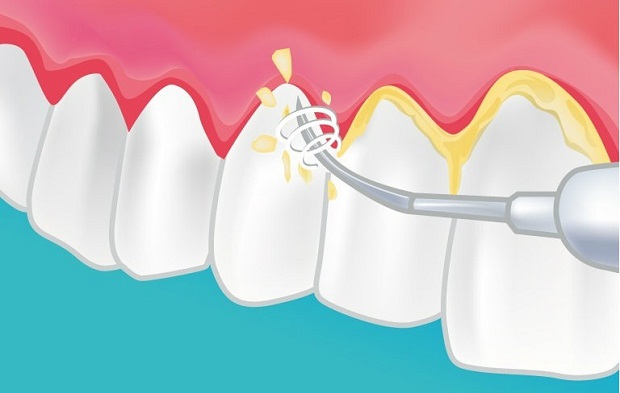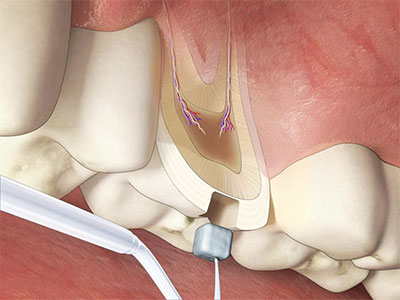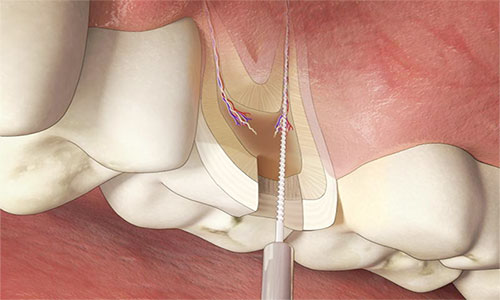Dental care
Dental care
Endodontics:
is the most popular dental treatment also called “devitalization”. Endodontics is one of the most commonly performed dental procedures in a dental office It is mandatory when an infection has evolved in the canals following an untreated tooth decay. The nerve must be cleaned and disinfected to prevent recurrence under a prosthesis.
This dental treatment involves several steps: the dental surgeon removes the still alive tissues by means of manual or rotary files then injects Chlorhexidine. Then it closes the channels using heated rubber tabs.
An endodontics is done under local anesthesia, it takes more or less time to perform depending on whether the dental care is targeting an incisor, a premolar or a molar.

Dental extraction:
A dental extraction is an ultimate dental treatment that is carried out by the dental surgeon. It is sometimes necessary when other solutions have failed.
An extraction may be:
Simple when the coronary part of the tooth is accessible.
Surgical when the tooth is hardly accessible. The surgeon must mill the bony tissue and cut the tooth and suture.
The sequences of an extraction are quite simple. The surgeon sometimes places a hemostatic square in the cavity to stop the bleeding and prescribes an anti pain to the patient to anticipate the awakening of the local anesthesia.

Descaling:
Descaling is a dental practice. Tartar is mineralized dental plaque; it is deposited on the surface of the teeth under the gum, which is likely to cause gingivitis.
Scaling is the process by which the dental plaque (composed of pieces of food and bacteria) has mineralized. The dentist, using a small pointed instrument, removes the visible tartar.
The latter is often the cause of inflammation of the gums (or gingivitis) which leads to a tearing of the teeth (retraction of the gum at the collar of the tooth).


Treatment of caries:
Treatment of caries is the most common practice of the dentist. The latter are acid attacks of enamel caused by bacteria de food debris. The process is simple. The tooth is demineralized, hollowed out and damaged. The care consists in extracting the demineralised part of the tooth and replacing it with a composite.
The composite: a kind of resin of the same color of the tooth, more aesthetic.
The choice between the two will depend on the location of the decay and its extent.
Treating a caries: The treatments of the dentist.
Dental caries, once the cavity is formed, can never be cured spontaneously.
To consult a dentist is therefore unavoidable. During the consultation, the patient chooses the appropriate treatment according to the stage of development of the disease. The older the decay, the more your tooth is attacked, the more important the intervention of the dentist will be. It is better to worry about it as soon as possible in order to preserve your dental capital.
STAGE 1 AND 2: SIMPLE CARRY
If the caries has only affected the email and dentine, the dentist removes the damaged tissue and clogs the voids with “sealing material”.

TREATMENT OF CARIE: POSE OF A COMPOSITE

STAGE 3: THE TOOTH RAGE
If the decay has attacked the dental pulp, the dentist must remove the nerve from the tooth and disinfect the dental canal before closing it. The tooth is devitalized.
DEVITALISATION DE LA DENT

STAGE 4: THE DENTAL ABSCESS
As a last resort, the dentist will have to remove the entire tooth and replace it with a dental prosthesis.
Practical advice
Even if you have had a caries treated by a dentist, she is afraid to re-infect a few years later. It happens that bacteria accumulate under a care, caries then continues to spread which causes pain. If you have a bad tooth, you should consult immediately.
If the tooth is devitalized, you will not feel the pain. Still, the infection can be serious. Your dentist will detect the infection during your annual checkup visit.

